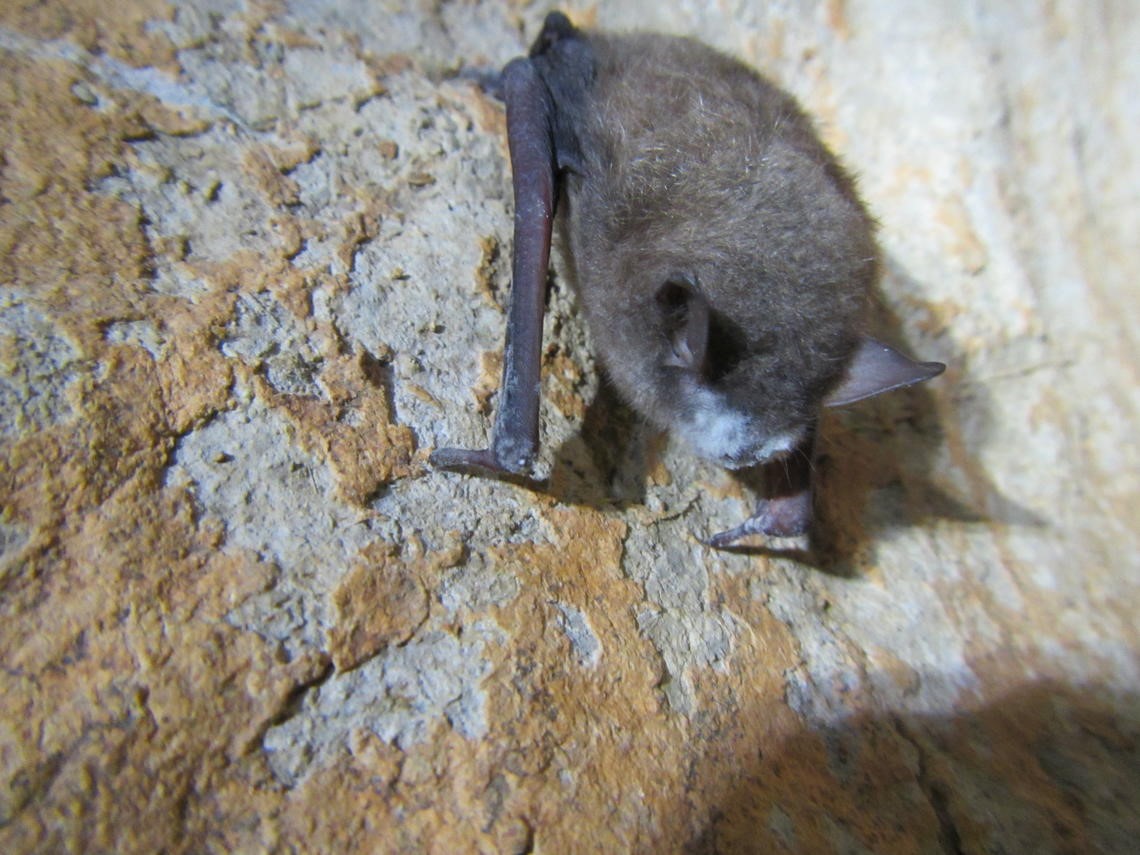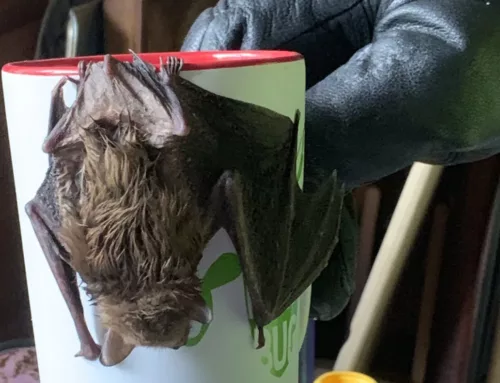There are a variety of challenges to bats. In the upper midwest these include but are not limited to encroachment, wind turbines, and white nose syndrome. White-nose syndrome (WNS) is the fungal disease killing bats in North America. It is estimated that this disease has killed over 5.7 million bats. There is a 93% documentented decline in Little Brown Bats. Research indicates the fungus that causes WNS was introduced from Europe. What started in New York in 2006 has spread to more than half of the United States and five Canadian provinces by August 2016, leaving millions of dead bats in its path.These include the once numerous little brown bat (Myotis lucifugus) and federally listed Indiana bat (Myotis sodalis) and northern long-eared bat (Myotis septentrionalis).
Researchers call the disease “white-nose syndrome” (WNS) because of the visible white fungal growth on infected bats’ muzzles and wings. This cold-loving fungus infects bats during hibernation, when the bats reduce their metabolic rate and lower their body temperature to save energy over winter. Hibernating bats affected by WNS wake up to warm temperatures more frequently, which results in using up fat reserves and then starvation before spring arrives.






